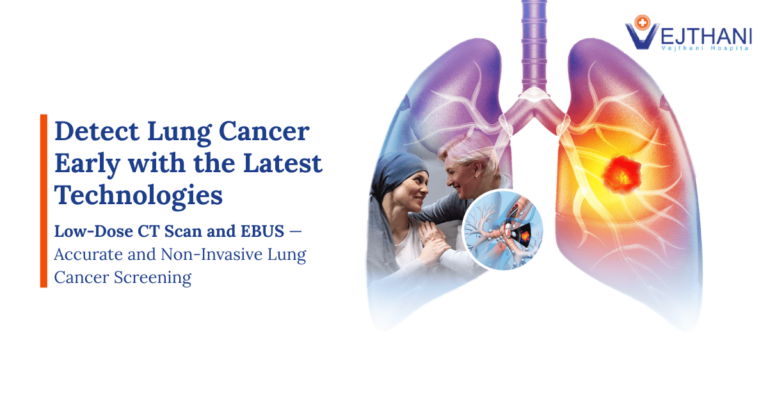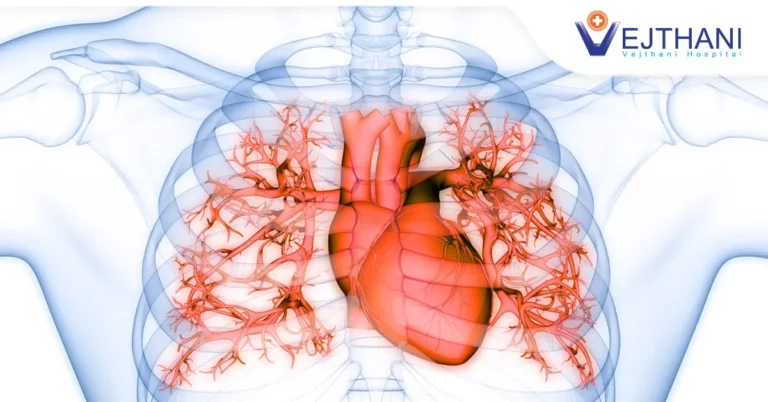

The prostate is a gland residing between the bladder and penis. It lies in front of the rectum, and the urethra runs through it, allowing urine to flow out of the body. Crucially, the prostate makes the fluid that nourishes and protects sperm. Prostate cancer is one of the most commonly occurring cancers in males.
Usually, prostate cancer is initially confined to the prostate gland and grows slowly, where it may not cause any significant harm. While some types of prostate cancer may require no or minimal treatment, other types are aggressive and fast-spreading and need specialist care. When the cancer is still confined to the prostate gland (i.e., before metastasis occurs), patients have the best chance of successful treatment.
Symptoms
Generally, prostate cancer symptoms are not apparent in the early stages of the disease. Because of this, routine screenings in the form of prostate-specific androgen (PSA)* tests and digital rectal exams are essential. More advanced prostate cancer may cause signs and symptoms, such as:
- Frequent urination
- More frequent urination at night
- Interrupted urine flow or the need to strain or push to urinate
- Burning or pain during urination
- Blood in the urine
- Blood in the seminal fluid
- New onset of erectile dysfunction
- Discomfort or pain when sitting (caused by an enlarged prostate)
If the cancer has spread to outside of the prostate gland, the patient may have the following symptoms:
- Pain in the back, hips, thighs, or other bones
- Swelling in the legs and/or feet
- Unexplained weight loss
- Fatigue
- Change in bowel habits
Prostate-specific antigen (PSA) is a substance produced by the prostate gland. A test can measure whether or not levels in the blood are below or above normal. Whilst an elevated level may be a strong indicator that prostate cancer is present, this is not always the case, and further investigation is often required using a biopsy or circulating tumor cell (CTC) test. A high PSA reading may indicate other, noncancerous, conditions, such as enlargement of the prostate (benign prostatic hyperplasia) and inflammation of the prostate (prostatitis).
We recommend that men over the age of 50, and especially those with one or more risk factors (see below section), commence routine screening.
Causes
Despite targeted research, it remains unclear what causes prostate cancer.
Initially, former healthy cells start to mutate and become abnormal, causing them to thrive, growing and dividing at a fast pace. The accumulating mass of abnormal cells forms a tumor that spreads to invade nearby tissue.
Risk factors
Age — The risk of prostate cancer increases with age, especially in men aged over 50 years old.
Race — Black men carry a higher risk of prostate cancer than men of other races. It is also likely to be aggressive or advanced.
Family history — A combination of shared cancer genes, diet, lifestyle, and environmental factors contribute a small amount to an increased risk of developing familial prostate cancer. Moreover, if multiple family members have the same or related types of cancer below the age of 50, it is possibly a hereditary type of cancer which is developed by the gene mutation that is inherited from generation to generation.
Genetic changes — Other genes include HPC1, HPC2, HPCX, CAPB, ATM, FANCA, HOXB13, and mismatch repair genes may carry an increased risk of developing prostate cancer.
Chemical exposure — There are some studies that indicate an increased risk of prostate cancer in men who are exposed to certain types of chemicals, such as agent orange, agricultural chemicals, and combustion by-products.
Obesity — Obesity is associated with many cancers, including prostate cancer. According to many studies, there is a connection between eating behavior and cancer.
Stages
Prostate cancer treatment plans are defined by the time you’re diagnosed and how far the cancer has already spread. To assess the amount of spreading and how it’s affecting your prostate, doctors use a system called ‘staging’.
The Gleason system grades the most common (primary) and infrequent (secondary) cell patterns found in a tissue sample on a scale of 1 to 5. They are then combined together to form your Gleason score which tells them precisely how aggressive the cancer is. The lowest score for cancer is 6, which is low-grade cancer; a 7 is medium-grade cancer; and high-grade cancer is scored as 8, 9, or 10.
Doctors use the TNM system to access prostate cancer stages. The system uses three different aspects of tumor growth and spread:
T = tumor: What’s the size of the main area of the cancer?
N = nodes: Has it spread to any lymph nodes? If so, how far?
M = metastasis: How far has the cancer spread?
Doctors combine the TNM system results with the Gleason score and PSA level test to decide on a stage grouping. This system uses Roman numerals from I (the least advanced) to IV (the most advanced). The stage level helps your doctor choose the best course of treatment for you.
Treatment
For patients diagnosed with prostate cancer, your cancer care team at Vejthani Hospital’s Cancer Center will discuss your treatment options with you. Your primary doctor will work with you to design a treatment plan that gives you the highest chance of recovery while managing side effects and preserving prostate function.
Descriptions of the four most common treatment options for prostate cancer are listed below:
1] Surgery — This operation removes the prostate and some surrounding healthy tissue and is performed by a surgical urologist, a urologist who specializes in treating cancer using surgery. The type of surgery used will depend on the stage of the disease, the patient’s overall health, and other risk factors. Typical options include radical prostatectomy, open radical prostatectomy, and laparoscopic (robotically assisted) radical prostatectomy.
2] Radiation — This is the strategic use of ionizing radiation or photons to kill cancer cells. It works by damaging the cancer cells’ DNA (the genetic blueprint of the cancer cell). Crucially, the targeted cells die without growing or replicating themselves. The treatment will be administered by a radiation oncologist, a doctor who specializes in giving radiation therapy to treat cancer. The main types of radiation therapy used to treat prostate cancer include the following:
- External-beam radiation therapy
- Brachytherapy
- Intensity-modulated radiation therapy (IMRT)
- Proton therapy
3] Chemotherapy — This is the use of drugs to destroy cancer cells, usually by ending their ability to grow and divide. Chemotherapy is generally given by a medical oncologist, a doctor who specializes in treating cancer with medication. Systemic chemotherapy gets to cancer cells throughout the body via the bloodstream. Chemotherapy is delivered through an intravenous (IV) tube placed into a vein using a needle. In particular, it is shown to help patients with high risk of the recurrence of prostate cancer and metastatic prostate cancer. A chemotherapy regimen usually consists of a specific number of cycles given over a set time period.
4] Hormone therapy — Since testosterone serves as the main fuel for prostate cancer cell growth, it’s a common target for treatment. Primary hormone therapy (known as Androgen Deprivation Therapy [ADT]) is part of the standard care for advanced metastatic prostate cancer. ADT is designed to directly block testosterone from acting on prostate cancer and/or being produced in the first place. It is highly effective at slowing down prostate cancer growth. The downside of ADT therapy is that it causes side effects in almost all patients; ranging from the loss of bone density to hot flushes, mood swings, erectile dysfunction and weight gain.
Complications
Metastasis — Prostate cancer can spread to nearby organs or bones. Once this has occurred, the disease may still be treated and controllable, but it’s unlikely to be cured.
Incontinence — Both prostate cancer and its treatment can cause urinary issues. Treatment depends on the severity and type of disease in question, but most likely will involve medications, catheters, and surgery.
Erectile dysfunction — Resulting from either cancer itself or its related treatment (surgery, radiation, hormone therapy). Medications, vacuum devices, and surgery are the standard course of treatment.
For full testing, diagnosis, treatment and recovery care, visit the Life Cancer Center at Vejthani Hospital. Our state-of-the-art facility and expert team of medical professionals are on hand to offer you the best prostate cancer treatment in Bangkok.
Visit Vejthani Cancer Center
- Readers Rating
- Rated 4.4 stars
4.4 / 5 ( Reviewers) - Outstanding
- Your Rating



























